JavaScript is a powerful programming framework that includes a number of multi-functional frameworks for both server-side and client-side programming. The frameworks provide a foundation for developers to create highly effective web applications. There’s no need to create the infrastructure and functionality of the application from scratch.
This article discusses ten easy-to-learn JavaScript frameworks for beginner and veteran programmers. These frameworks are unavoidable thanks to JavaScript’s dominance in the web development field. No other scripting, programming, and markup language come close to JavaScript for ease of use and functionality. Keep reading to learn more about the best JavaScript framework in 2022.
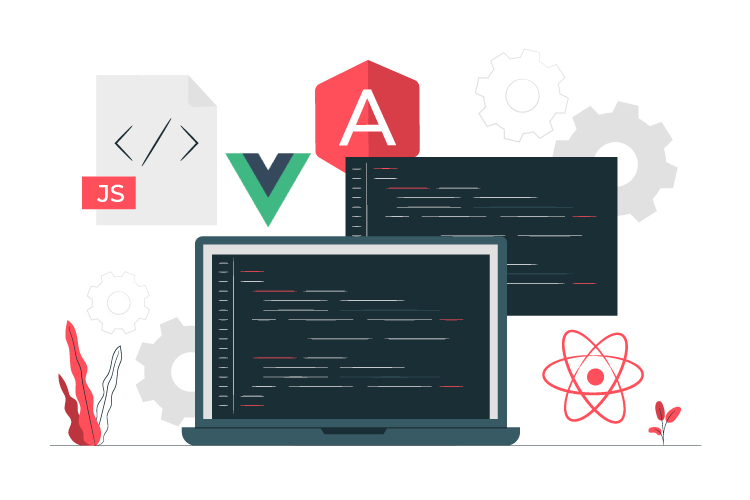
What Is a JavaScript Framework?
A JavaScript framework is a pre-written code presented in a particular context, making it easier for programmers to develop web applications. It is a template providing common programming patterns for web applications. Therefore, programmers do not need to write code for every application feature they should include.

JavaScript frameworks provide rules developers need to learn to quickly and efficiently make complex applications from scratch. The rules also make it easier to organize and shape web applications. It is akin to the potter’s wheel, which rotates to create differently shaped and sized pots.
Why Are There So Many JavaScript Frameworks?
There are so many JavaScript frameworks because of how easily you can build one using the programming language. Also, users aren’t always satisfied with their tools and need more efficient work. For some users, existing frameworks might not fit their expectations of front-end programming.
Why Do Developers Love JavaScript Frameworks?
Developers love JavaScript frameworks because of the versatility they provide. The frameworks like React.js, React.js, and Angular.js make it easier to create a website’s front end. With Node.js, developers can also work more effectively on a website’s backend.
But the popularity of JavaScript frameworks doesn’t just stop with web development. It is also possible to create native apps for Android and iOS devices using React Native. JavaScript frameworks are also useful in creating desktop apps and enabling machine learning.
In web development, JavaScript is everywhere, making it easy for programmers to develop great applications. Major websites like LinkedIn rely on JavaScript frameworks for their server-side coding. The Node.js JavaScript backend framework is used properly and speeds up both web and native applications.
List of Top JavaScript Frameworks for 2023
1. React.js
React.js is an open-source JavaScript framework developed by Facebook (or Meta). It effectively develops dynamic, user-friendly web pages capable of attracting high traffic. A creator can integrate its virtual DOM easily into an application.
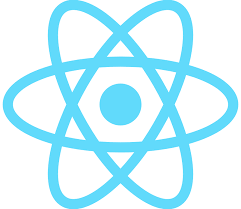
React.js is based on reusable components that make it easier for teams to collaborate on a project. It also has a developer tool for easily debugging, finding, and fixing errors in the code. Using React Native, developing native apps for Android and iOS devices is possible.
It doesn’t take long for you to learn how to use React.js. In one to six months, you should have attained the highest proficiency levels as a React.js developer. However, the exact time it takes to master React.js depends on your prior experience as a software developer. It also matters how much time you wish to learn the JavaScript framework.
Spending 10 hours weekly learning React.js can help you gain proficiency in a few months. That would mean taking at least two hours a day to learn how to use React.js. So, how fast you learn React.js depends on the number of hours you’re willing to put in daily.
If you haven’t done programming before, React.js can be difficult to learn. You must start by familiarizing yourself with JavaScript before learning React.js. Even so, it is the easiest JavaScript framework to learn and use.
2. Mithril.js
When it comes to client-side JavaScript, Mithril.js is one of the best, offering wonderful single-page applications. It is a straightforward framework to implement and an open-source IDevE (Isomorphic Development Ecosystem), facilitating the full-fledged building of real-time web applications. It contains all the backend and front-end components you would wish to build into any application.
Some of the big companies that utilize Mithril are Vimeo and Nike. These and other users like it to be one of the purest JavaScript frameworks. It is faster than React.js, lightweight, robust, and has a small learning curve.

Concerning the small learning curve, Mithril.js is too lightweight to spend a lot of time learning. It is one of the best front-end JavaScript frameworks for coding beginners. Within a few weeks, you’ll have all the skills you need to use Mithril.js in your web development duties.
The only thing that may hinder you from mastering Mithril.js within a short time is the many APIs you have to learn. The APIs could be more than React.js, making the learning process take longer than usual.
3. Vue.js
Since its release in 2014, Vue.js has gained over 191,000 GitHub stars, making it one of the most trending JavaScript libraries in the world today. Vue.js has experienced tremendous growth even though it is one of the most recently released.
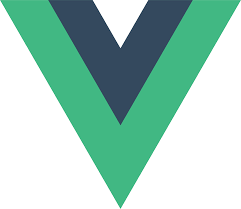
It is a front-end JavaScript framework with versatility, approachability, and speed. Vue.js is great for building single-page applications such as Mithril.js. It has an incremental use model that ensures you only use it in limited amounts compared to other frameworks requiring full adoption. Vue.js has a central library focusing on the MVC architecture’s View layer.
Some online reviews say it would take you only 10 to 15 hours to learn Vue.js. There are several courses, some free and others paid for, that you can take to learn this particular JavaScript framework. Please write what you have learned to master it as you learn the framework.
Vue.js can be problematic for beginners who have never used JavaScript before despite its ease of learning. If you’re one of them, don’t worry. Once you learn the drop method and use script tags, you can start developing complex and simple applications almost from scratch.
4. Aurelia.js
Aurelia.js is a feature-full open-source JavaScript framework for building ultra-modern website interfaces. You can use it to build mobile applications, desktop apps, and web browsers. Unlike other JavaScript frameworks, which exist as single units, Aurelia.js is composed of several feature-oriented modules for binding, templating, dependency injection, router, metadata, and so on.

The fact that it is open-source is the biggest advantage of Aurelia.js. Developers get access to its code free of charge under the MIT license. It utilizes the latest DOM APIs, exposing developers to open web standards. Besides, Aurelia.js provides an all-in-one solution that removes the necessity of working with different libraries to develop a single app.
Whether or not you have used JavaScript before, Aurelia.js is extremely easy to learn. To unlock the framework’s limited possibilities, you only need to master a small set of APIs and patterns. Once you learn how to use it, you’ll be surprised by how little code you need for your applications.
It can prove not easy to learn and use Aurelia.js if you are used to stand-alone JavaScript frameworks. However, that seeming difficulty, together with the framework’s all-in-one solution, is what makes it one of the most desirable.
5. Meteor.js
Meteor.js is an open-source, full-stack, free, and backend web development framework that provides rapid cross-platform code creation and prototyping. It is written in Node.js to provide a one-stop JavaScript backend framework for first-time and veteran programmers.

One of the biggest benefits of Meteor.js is that it is open-source and available free of charge. It integrates JavaScript frameworks like Angular.js, Express.js, and React.js for more comprehensive web development. Meteor.js reduces the amount of code you use, given many ready-to-use packages, libraries, and scaffolding.
If you have been using JavaScript for a while, learning Meteor.js should be easy. It has well-detailed documentation that receives regular updates, making it extremely easy. Besides, it has a relatively easy code with fewer structural rules.
For those new to JavaScript, it can get a little difficult to learn Meteor.js within a short time. You would have to familiarize yourself with the workings of JavaScript before you can grasp the full working of Meteor.js.
6. Polymer.js

Polymer.js is an open-source JavaScript framework built by Google for creating website elements in a simple, straightforward way. It makes it possible to create extensive applications using one-way or two-way data binding. Google has used Polymer.js to develop its services, including Play Music, Google Earth, and YouTube.
The framework has several advantages, including its ability to eliminate garbage CSS. It also makes creating a high-end user experience easier, supports one-way and two-way data binding, and utilizes app layout components to produce a responsive design.
It allows you to use Google-API-ready-made components and a few custom-made components, so Polymer.js is extremely easy to learn. Creating your website components is extremely easy once you learn how to use them.
You can access Polymer.js tutorials online and learn how to use the framework at your convenience. If you have never used JavaScript or are new to programming, the learning curve can be quite steep. So, don’t be in a hurry to get everything about Polymer.js the first time you use it.
7. Backbone.js
Backbone.js is a single-page web application framework written in JavaScript. Collections, routers, events, views, and models are just a few of the building blocks of this js. Web developers can use it to create business and user interface logic separately.

The largest advantage of Backbone.js is that it is open-source and free of charge. You can create a backbone for any web development project and organize the code. The resultant client-side and mobile applications have an organized and well-structured format.
Developers with a JavaScript background need between a few hours and several days to learn Backbone.js. That means having a working knowledge of Function Hoisting, Anonymous Functions, Closure/Lexical Scope, Object Prototype, Variable Scope, .call, .apply, and .bind, components of JavaScript.
If you are new to coding or have never used JavaScript before, taking tutorials about the programming language is necessary. With that, it would be a while before you can confidently utilize Backbone.js to build your favorite web applications.
8. Angular.js
Since its release in 2010, Angular has earned at least 78,000 GitHub stars. Current JS frameworks for front-end web development borrow most of their features and functionality from Angular.js, the first on the stack. Angular.js does automatic data synchronization between users and the database through its data binding functionality, making the user-UI interaction seamless.
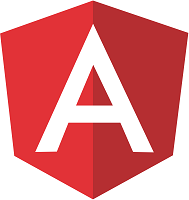
One of the biggest benefits of Angular.js is that it builds pages through the browser. That reduces the load on the web application’s server, enabling faster load times. The open-source JavaScript framework provides two-way data binding, high-class server performance, and numerous third-party integrations.
It can take you longer to learn Angular.js since you need working knowledge of JavaScript and TypeScript. If you’re new to coding or have never used any of the two programming languages, you’ll take a little longer to master Angular.js. For those who have used the two programming languages before, learning Angular.js should take a week or so if you put in at least two hours daily.
9. Ember.js
Ember.js cannot miss the JavaScript frameworks list, given how it enables building rich, interactive user interfaces, regardless of the website’s size. Ember.js will do it all; whether you want a one-page or an enterprise application, Ember.js will do it all. It utilizes CSS and HTML for development, reducing the time you need to learn it.

Its benefit is that it prioritizes out-of-the-box functionality, reducing the number of decisions you have to make as a developer. As a result, you’ll have fewer errors in the resultant code. However, it cannot be easy to customize.
Learning Ember.js can be difficult, considering how fast the framework can change. Remember, it is an open-source JS framework that’s ever-evolving. The pace of change is so rapid that existing online tutorials may not be relevant for the latest versions of the framework. So, it can take some time before you master all elements of Ember.js. Once you learn how to use it, you’ll never want to return to Ember.js.
10. Svelte
Svelte.js is an open-source JS framework for front-end, component-based web development. It is written in TypeScript and builds the boilerplate code in JavaScript, CSS, and HTML. Since its launch in 2016, Svelte.js has gained a reputation among programmers. It is much better in making it easier to develop web applications than React.js or Vue.js.
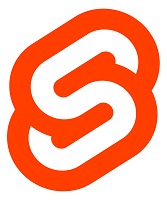
It is a simple component-based framework that’s easy to learn, use, and understand. Compared to other JS frameworks, its small-sized build makes it very desirable. If you’re looking for one of the best JavaScript frameworks for web development, choose Svelte.js. It builds websites capable of top-notch performance and high-speed client-side and server-side rendering.
Compared to Vue.js, Svelte.js is simpler to learn. With Svelte.js, you can avoid using some boilerplate on other platforms. Besides, the variables are simpler than Vue.js, React.js, and other JavaScript frameworks.
If you have used JavaScript before, learning Svelte.js can take you a couple of days. All you need is to identify an application to build instead of watching a long video tutorial or reading documentation.
Things to Consider Before Choosing a Framework
You may only need to pick one or two from the JavaScript frameworks list, depending on whether you are working on your website’s front end or back end. The framework should not only be readily available but also easier to learn. The following are the most important factors to consider when choosing a JavaScript framework:

1. Availability of Learning
First, you must ask yourself if you can find opportunities to learn the framework easily and quickly. A good framework is one on which you can find abundant resources online. Apart from documentation for the framework, you should check online courses and tutorials. It could take a while before you find a suitable way to train for newer frameworks. On the other hand, older frameworks will likely have books and other resources from reputable authors.
2. Resources
Each framework comes with unique resources to make it easier to use. They include documentation for a basic overview of the framework. Apart from that, you need learning resources like video tutorials to help you resolve an issue. Within the framework’s community, you can also find resources for resolving any questions you might have.
3. Popularity
When choosing a JavaScript framework, it often matters how popular it is. Regardless of how much you like a particular JS framework, your client may prefer another one. Fewer developers work on the less popular frameworks, leading to the likelihood of abandoning a project midway.
Most developers use popular frameworks, making it easier to find several programmers for a project requiring them. For developers, a popular framework makes career progression extremely easy. Besides, the large community of popular frameworks makes finding a solution to an issue easier.
4. Core Features
Features of a JavaScript framework refer to the functions it can do. While the simpler frameworks are composed of a view layer, others are fully-fledged. Typically, the features of a framework are spelled out in the documentation and include form processing and validation, HTTP communication, routing, state management, and templating. Each JavaScript has a unique combination of features, which means you should take the time to choose wisely.
5. Usability
You can either read about a framework’s usability or test it through a mini-project. The latter can help you know whether or not you are productive with the framework. A usable framework should have conventional structures and guidelines, work without external plugins, have a built-in CLL, and be easier to attain desired results.
6. Ease of integration
Every JS framework requires additional tools from time to time. With third-party libraries, you can solve problems like time formatting, DOM manipulation, and rich text formatting, which could be beyond the JavaScript framework. Essentially, the integration should happen fast to enable you to embark on your project. If it takes forever, you might not be able to finish your web application on time.
7. Active Community
All open-source JavaScript has communities behind them. The main difference lies in how active the community for a particular framework is. An active community provides help, useful suggestions, and code example to newbie and seasoned web developers on the framework. Be sure to check out the framework’s community before committing to learn and use it.
8. Code Size
A framework’s code size determines how long it can take to develop an application using it. With most JavaScript frameworks, the code structures make it possible to do more without too much code. Therefore, the best frameworks allow chaining blocks of code for much functionality. Unless you are a JavaScript expert, too much code can only take your precious time.
Frequently Asked Questions
There are several issues concerning JavaScript frameworks for which you might want quick answers. Here are some questions and answers to help you:
What JavaScript Framework is best to learn?
The best JavaScript framework to learn in 2022, especially if you want to land a quick job, is React.js. It is the most popular JS framework, holding the number one position since 2017. Angular.js follows while Vue.js sits in third place.
Is React like jQuery?
Yes and no. Yes, because React and jQuery produce almost similar results. No, because the results come in totally different ways. While React works by giving developers an easy way to embed HTML in JavaScript, jQuery works through JavaScript itself.
Why is VUE better than jQuery?
Vue is better than jQuery because the former can help build full-fledged, single-page web applications. Thus, Vue is great for light scripting compared to jQuery, which can be cumbersome.
Why is React.js so fast?
React.js is fast because of the ease of using it to build web applications. Once you have built an application with React.js, it loads fast, responding quickly to the user’s actions. Overall, it results in a minimalist UI, making React.js-based sites fast.
Can I use React and jQuery together?
No. You cannot use React.js and jQuery together because there isn’t a way to integrate the two. Using the two frameworks together can result in unexpected and dire consequences, which you want to avoid.
Final Thoughts
So, which is the best JavaScript framework for 2022? If you are looking for popularity and speed, React.js is the best option. That’s not to say that the other frameworks are bad. Rather, it is important to assess each of them based on their pros and cons.
One of the main things to look at is how easy the framework is to learn. The availability of resources like documentation and online tutorials can help you know how to use any framework very fast. Importantly, the framework you choose should deliver your project the right way. Therefore, consider your project’s requirements before settling on a JavaScript framework.

2 comments on “What is the Best JavaScript Framework in 2023?”
Comments are closed.